
Birla Mandir Temple
Jaipur is famous for numerous architectural marvels of ancient and modern times. Out of the many, the Laxmi Narayan temple or the Birla temple is very famous among those who love architecture and among pilgrims. Although not very old, this temple is famous for its grand architecture and serene beauty. The temple gets its name from the Birla Family who commissioned building several modern temples around the world along with this temple.
This temple is dedicated to the Hindu protector God, Vishnu and his consort, Goddess Laxmi. This temple also holds shrine of various other Hindu Gods and Goddess. The temple walls have unique Hindu symbols and citation from ancient books of the religion including the Holy Book, Gita. The temple is constructed in white marbles and is unique when compared to the ancient temples of yesteryears. You can also find many idols and statues of philosophers like Buddha, Confucius, Socrates, Zarathustra and others
Book Now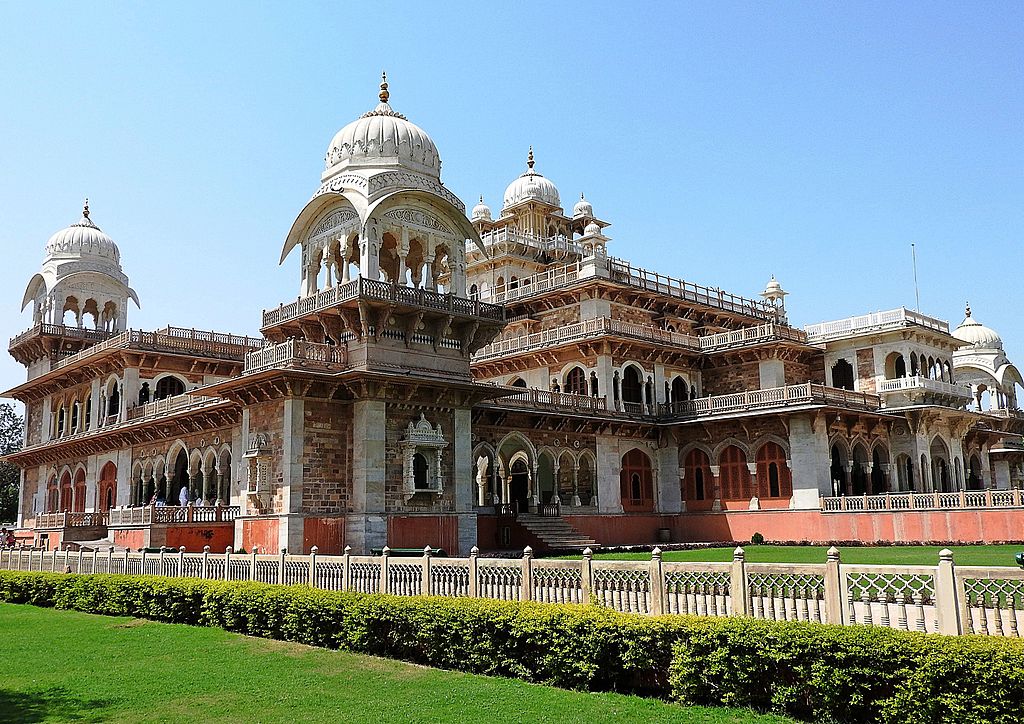
Albert Hall Museum
The Pink City of Jaipur is known for being home to architectural wonders, one of which is the Albert Hall Museum, one of the most popular tourist attractions of the city. It was originally a concert hall that was erected way back in the year 1876. This splendid architecture is now a popular Museum of Jaipur, showcasing the objects and artifacts of the rich history of India and more. The museum is known not only for its exquisite collection but also for its wonderful architecture. The museum has 16 galleries in total and one gallery is declared ‘gallery of the month’. The museum has a design quite similar to the Victoria and Albert museum in London.
Book Now
Jaipur Zoo
Home to a variety of wildlife creatures, birds and aquatic animals, the Jaipur Zoo is the perfect location for a weekend getaway trip with family and friends. Opened in 1877, the zoo is found near the Albert Hall Museum and holds a distinct collection of more than 50 species of animals and birds from around the globe.
Additionally, the Zoo also holds a museum inside it's the premise. The museum depicts the history and the present of the wildlife of the state, Rajasthan. Presently, the zoo carries as many bird species as animals and as of 2018, it has been announced as a bird park as well.
Thus, the zoo has been divided into two sections - The animal section and the other birds and reptile sections. The key animals in Zoo include a varied culture of Black Buck, Baboon, Hyena, Black Bear and Himalayan Bear including birds - White Ibis, Teeter, Peacock, Parrot, Crane, Vulture, Cockatoo, and Painted Stock among others.
Book Now
Pink city wall
Pink City in Jaipur refers to the old walled city that was built in the year 1727 by Maharaja Jai Singh II. This was declared a UNESCO World Heritage Site as of June 6th 2019. The wall that marks the boundary of the Pink City is about six metres high and three metres thick and encompasses a number of structures within its confines. In keeping with the magnificence of the structure, there are seven different gates that provide access to the Old City, namely Chand Pol, Suraj Pol, Ajmeri Gate, New Gate, Sanganeri Gate, Ghat Gate, Samrat Gate and Zorawar Singh Gate. Built about 275 years ago, today it presents the glorious past of our country through its culture and architecture. The city is known as 'Pink City' as it is built out of Sandstone and reflects the colour pink in the daytime.
Book Now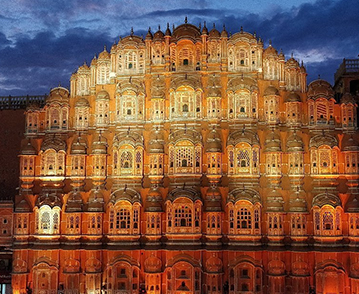
Jaipur Hawa Mahal
Hawa Mahal looks like the crown of Lord Krishna, Hindu God. It consist of 5 stories as Beehive structure. There are 953 Jharokhas volumes with overhanging balconies. The structure was made for royal women. Royal women used to stand on top three floors to look upon the streets and markets where important events took place.They were not allowed to stand directly inside the public crowd. Top three floors have approximately one room width. Patios were furnished on first two floors. Minimum ornamentation is done. Structure is made up of pink colour painted sandstones which is again lined with lively white colour. Interior is shaped in stone inlay and arch work.
Tourist can take walk through imperial toran which opens into giant Plaza. Courtyard is engrossed with two buildings and one Hawa Mahal which stands on east side. Museam is build inside and it contain huge acquisition of antique, weapons and articles possession of Royal family. The Museum is perfect watch for history lovers. Each lucarne has cubicle where people can sit and watch streets. Fountain is furnished in front of each chamber which is enjoyed as well. Archeological department handles the top two floors and can be worm into.
Book Now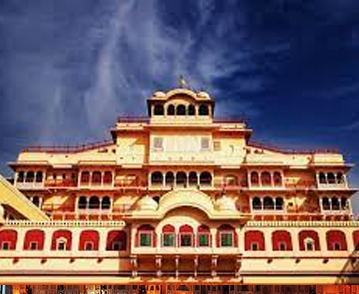
City Palace, Jaipur
Positioned within a walled city, City Palace Jaipur was built by Maharaja Sawai Jai Singh II, the founder of Jaipur. Representing a beautiful blend of Rajput and Mughal architecture, the last ruling royal family still resides in the exclusive section of the palace that is private and not open for the public to tour.
Encompassing Mubarak Mahal (the palace of reception) and Maharani’s Palace (the palace of the queen), the city palace of Jaipur is truly commendable. Jaipur is segregated into 9 blocks with royal palace standing tall and reflecting so much beauty and charm in the center. Walls of the city were made by renowned architect Vidyadhar Bhattacharya and Shilpa Shastra.
Book Now
jantar mantar jaipur
Built in the early 18th century by Maharaja Sawai Jai Singh II, it is a conglomeration of fixed stones and very large structures. Each has its specific usage. The main reason for it being built was because of the Maharaja’s fascination with celestial objects and movement of different bodies in the sky.
Jantar Mantar in Jaipur has 19 large instruments with very specific purposes, the most popular and prominent one being- the Samrat Yantra. It is considered to be largest sundial of the country.
Book Now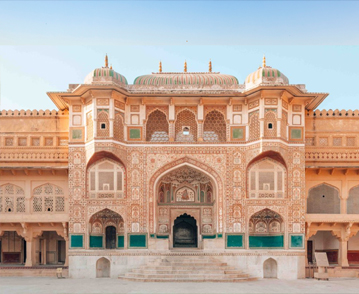
Amber Fort
Amber Fort is the perfect example to suggest how Jaipur’s history is not restricted simply to the acts of valour by its kings and soldiers, but also extends to the patronage of architecture and science, as reflected in the construction of this marvellous fort and also the entire city.
Famously known as the Pink City, Jaipur is surrounded by hills on three sides which made it an ideal location for the capital of the Rajputana empire. Jaipur, as part of the ancient kingdom, was ruled by the Kachhwaha clan of Rajput. They had been in an alliance with the Mughals over their common rivalry with the Sisodia clan of Rajput.
Jaipur was, historically, India’s first planned city. Maharaja Sawai Jai Singh patronised the construction of the city as per traditional Rajputana architectural style. Vidyadhar Bhattacharya, the chief architect from Bengal was responsible for ensuring that the layout of the city was based on the principles of Shilpa Shastra, the same principles were also followed during the construction of Amber Fort. The primarily important buildings were built of sandstone, which is found in abundance in the state.
Book Now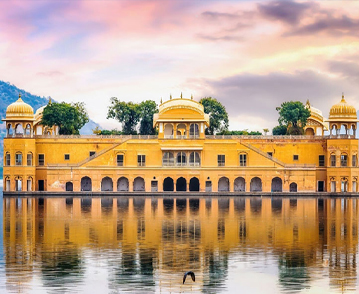
jal mahal
A Splendid Palace Nestled in the Middle of a Lake Set in the middle of the picturesque Man Sagar Lake, Jal Mahal (Water Palace) in Jaipur is a spectacular structure that seems to be floating on the lake's surface. An architectural marvel in itself, it is an embodiment of the engineering prowess of the Rajput period. The palace, which was built as a hunting lodge for the Maharajas of Jaipur, has now become one of the prime tourist attractions in the city. While planning your trip, don't forget to book your Tour in Jaipur such that you have easy access to this magnificent palace and other forts and historical attractions in the city.
Here is everything about the Jal Mahal Palace in Jaipur, including its history, architecture, timings, entry fee, and other details.
Book Now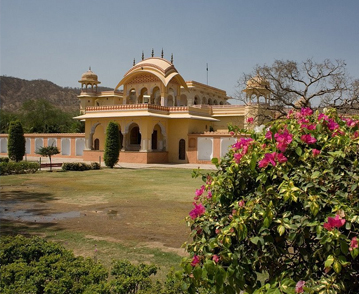
Kanak Garden
Kanak Vrindavan is a garden in Jaipur, the capital of Rajasthan. It is built in a valley surrounded by Aravali hills and is located on the way to the Amer Fort at the bottom of the Nahargarh hill. The place is approx 8 km north of the Jaipur city. The garden complex is having many nearby tourist attractions as the Amer fort Palace, Jaigarh fort and Nahargarh fort along with much lush greenery. The garden was coined by Kachchwaha Rajput Maharaja Sawai Jai Singh of Jaipur, approximately 275 years ago, at the time when the complex was built. It includes term 'Vrindavan' as the garden resembles the descriptions of the place, where God Sri Krishna had performed MahaRaas near Mathura, and word Kanak came from Maharaja's one of the Maharani Kanakde.This garden is compared to the valley of Vrindavan and the maharaja, consecrated an idol of Sri Krishna in a temple in the Kanak Vrindavan valley called the Shri Govind Deoji Parisar. The garden has a temple, a series of fountains and intricate marble decorations. It is managed by the Government of Rajasthan.
Book Now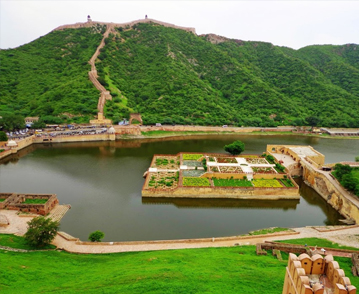
Maotha Lake
Maota Lake is located in the south of the city of Amber, about 11 kilometres (6.8 mi) from the center of Jaipur, at the base of Amber Fort. The lake contains an island in the center, named Kesar Kyari Bagh. The island has a saffron garden, whose plants are said to have been planted by a Maharaja in the 15th century. The Dil-Aaram Bagh is situated on the northern end of the lake. There is no fee to visit the lake, but there is a fee to traverse upward (or ride an elephant) to enter the Amber Fort above. The lake collects rain water flowing down from the nearby hills and was the main source of water for the Amber Fort and common people. In Jaipur, after 7 or 10 days of Ganesh chaturthi, the statue is taken in a procession for immersion in the Maota Lake
Book NowSecond Day Sightseeing
Timing 9:00am to 6:00 pm

Nahargarh Fort
Nahargarh Fort stands on the edge of the Aravalli Hills, overlooking the city of Jaipur in the Indian state of Rajasthan. Along with Amer Fort and Jaigarh Fort, Nahargarh once formed a strong defence ring for the city. The fort was originally named Sudershangarh, but it became known as Nahargarh, which means 'abode of tigers'. The popular belief is that Nahar here stands for Nahar Singh Bhomia, whose spirit haunted the place and obstructed construction of the fort. Nahar's spirit was pacified by building a temple in his memory within the fort, which thus became known by his name. Built mainly in 1734 by Maharaja Sawai Jai Singh, the king of Jaipur, the fort was constructed as a place of retreat on the summit of the ridge above the city. Walls extended over the surrounding hills, forming fortifications that connected this fort to Jaigarh, the fort above the old capital of Amber.
Book Now
Jaigarh Fort
Jaigarh Fort is situated on the promontory called the Cheel ka Teela (Hill of Eagles) of the Aravalli range; it overlooks the Amer Fort and the Maota Lake, near Amer in Jaipur, Rajasthan, India.The fort was built by Sawai Jai Singh in 1726 to protect the Amer Fort and its palace complex and was named after him.The fort, rugged and similar in structural design to the Amer Fort, is also known as Victory Fort. It has a length of 3 kilometres (1.9 mi) along the north–south direction and a width of 1 kilometre (0.62 mi). The fort features a cannon named "Jaivana" (Jaivana Cannon), which was manufactured in the fort precincts and was then the world's largest cannon on wheels. Jaigarh Fort and Amer Fort are connected by subterranean passages and considered as one complex.
Book NowNight Program
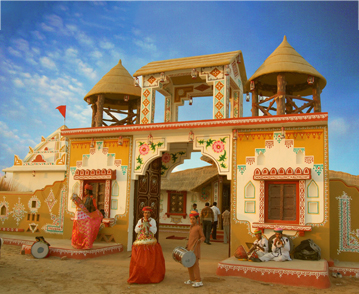
Chokhi Dhani
Chokhi Dhani Group is a Rajasthani-village-themed hospitality brand, which was conceptualised in 1990, with the notion to promote the local heritage and culture that is indigenous to Rajasthan and India.
What started as a place where people could experience traditional artistry, Rajasthani culture and its delectable cuisine all under one roof, has turned into the famous Chokhi Dhani Group, an unparalleled hospitality chain, attracting numerous local and international travellers. Under the stellar supervision of Chairman Mr. Gul Vaswani and Managing Director Mr. Subhash Vaswani, the Chokhi Dhani Group has emerged as a leading hospitality group, due to its commendable hospitality and bringing the true essence of Rajasthan’s rich culture and customs.
Book Now